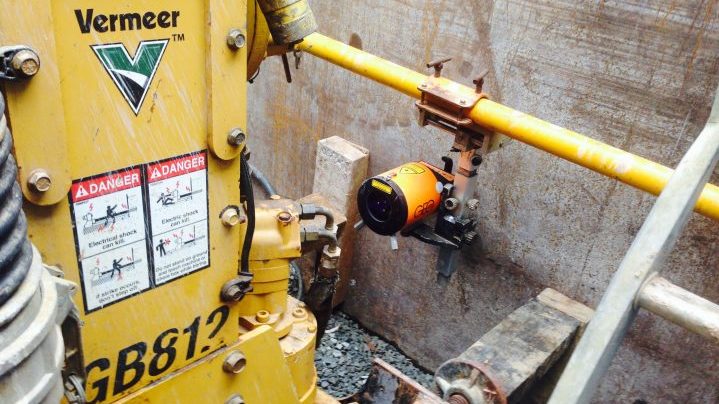Quality, time and cost. These three competing factors — often referred to as the triple constraint — are always front-of-mind of clients when they are seeking contractors to carry out project works. While clients would like to be able to meet all three, this is rarely possible. This holds true for pipeline installations. However, as Stuart Harrison the Managing Director of Edge Underground explains, the key for pipeline installations is finding a contractor that is able to balance these constraints to get a quality installation while remaining on time and on budget.
“While in the past people considered the general rule of thumb as the higher the standard of quality, the higher the cost and the more time that is needed, that is no longer necessarily true,” Mr Harrison said.
“With improvements in technology and equipment there are now more options available that allow clients to find a balance between quality, time and cost.”
An accurate installation
Depending on the error tolerance of an installation, the only way that a client will be able to get a quality installation is by choosing a microtunnelling contractor.
“For projects with tight tolerances, microtunnelling is unrivalled in terms of accuracy. Contractors can achieve an accuracy of +/-25mm, with an accuracy of +/-10mm often achieved with the Vermeer AXIS guided boring system,” Mr Harrison.
“This level of accuracy can be achieved because microtunnelling machines typically utilise a high end laser guidance system to position the target, and a live monitoring system allows the operator to watch the drill as it moves through the ground and make hydraulic steering corrections if required.
“No other trenchless method is able to provide the level of accuracy that microtunnelling can.”
Keeping time and costs down
Microtunnelling offers time and cost reductions in two key areas: restoration costs and risk minimisation.
As microtunnelling is a trenchless method of pipeline installation there are minimal restoration costs as only an entry and exit pit are required to be excavated.
This means, that unlike open cut methods which leave lengthy stretches of open trenches that need to be restored after an installation, restoration costs and time are significantly less when using microtunnelling.
The risk of costly setbacks are also reduced when using the Vermeer AXIS.
“One of the main risks of a microtunnelling installation is changing ground conditions. While geotechnical information is provided for every installation, it is only able to provide a snapshot of the conditions present, and it is not uncommon for the ground conditions to be different to the information provided.
“This creates a problem if you don’t have the right equipment when you encounter unexpected conditions.
“The main problem is that most microtunnelling machines are not designed to retract, so when ground conditions change the contractor needs to excavate over the head at the point of difference in order to change it. This causes time and costs to increase due to increased labour and restoration costs.
“Vermeer AXIS avoids this problem as it is designed to retract. It performs a pilot line where the pipeline will be installed and if it encounters any issues, it can be retracted and the contractor can assess the ground to make a decision about which part to use.
“Once the pilot is complete, the microtunneller can begin installing the final product pipe with a greater chance of success, as the risks of the unknown have been reduced.”
A balanced approach
Mr Harrison said that microtunnelling like every other pipeline installation method is not the perfect answer to the triple constraint.
“At the end of the day, clients need to decide how much importance they place on quality, time and cost, and choose a solution that meets their needs based on that,” Mr Harrison said.
“However, microtunnelling using the Vermeer AXIS system can offer a good balance between the three by combining accuracy with reduced restoration costs and risks, to get a high quality installation that is on time and on budget.”

